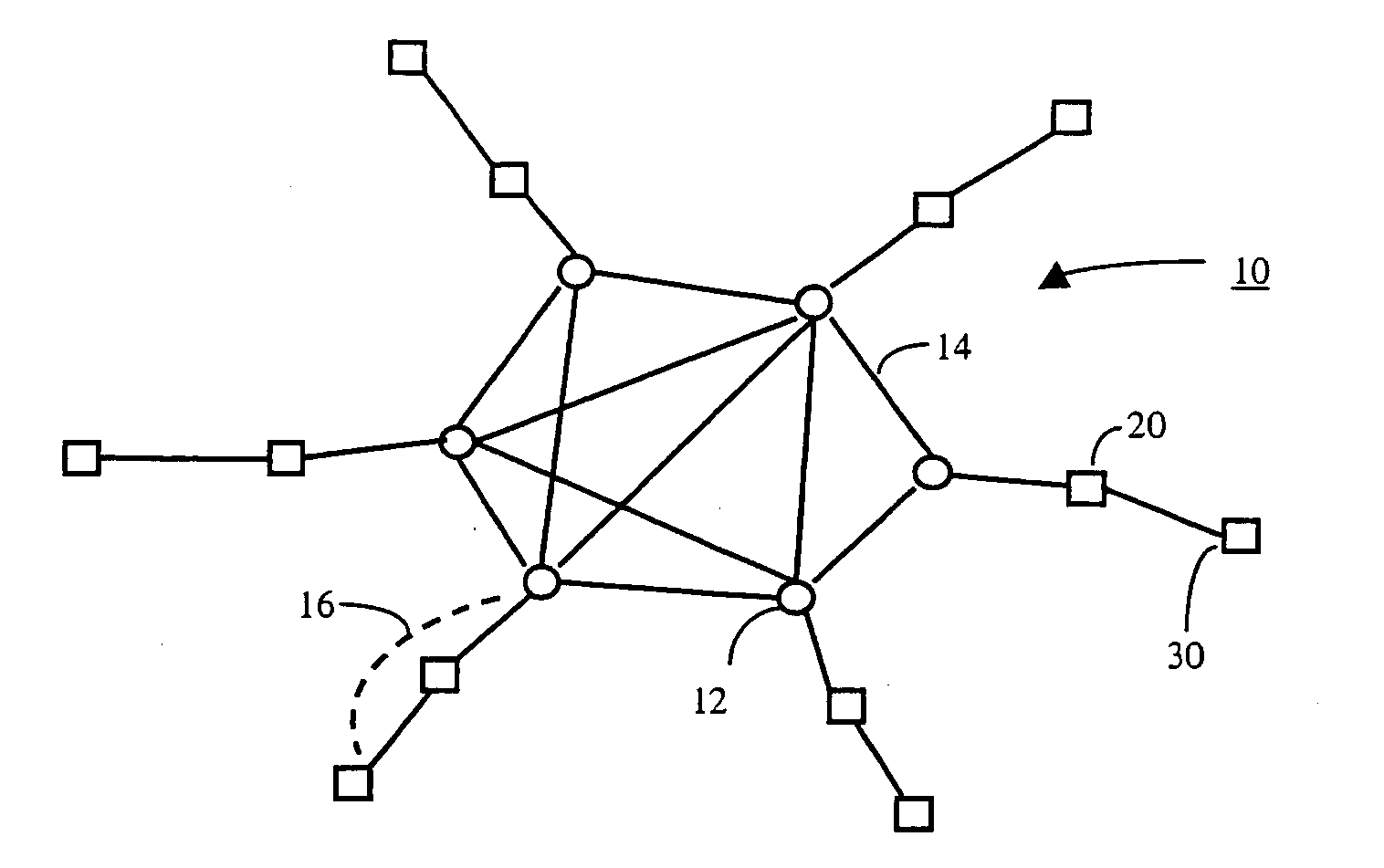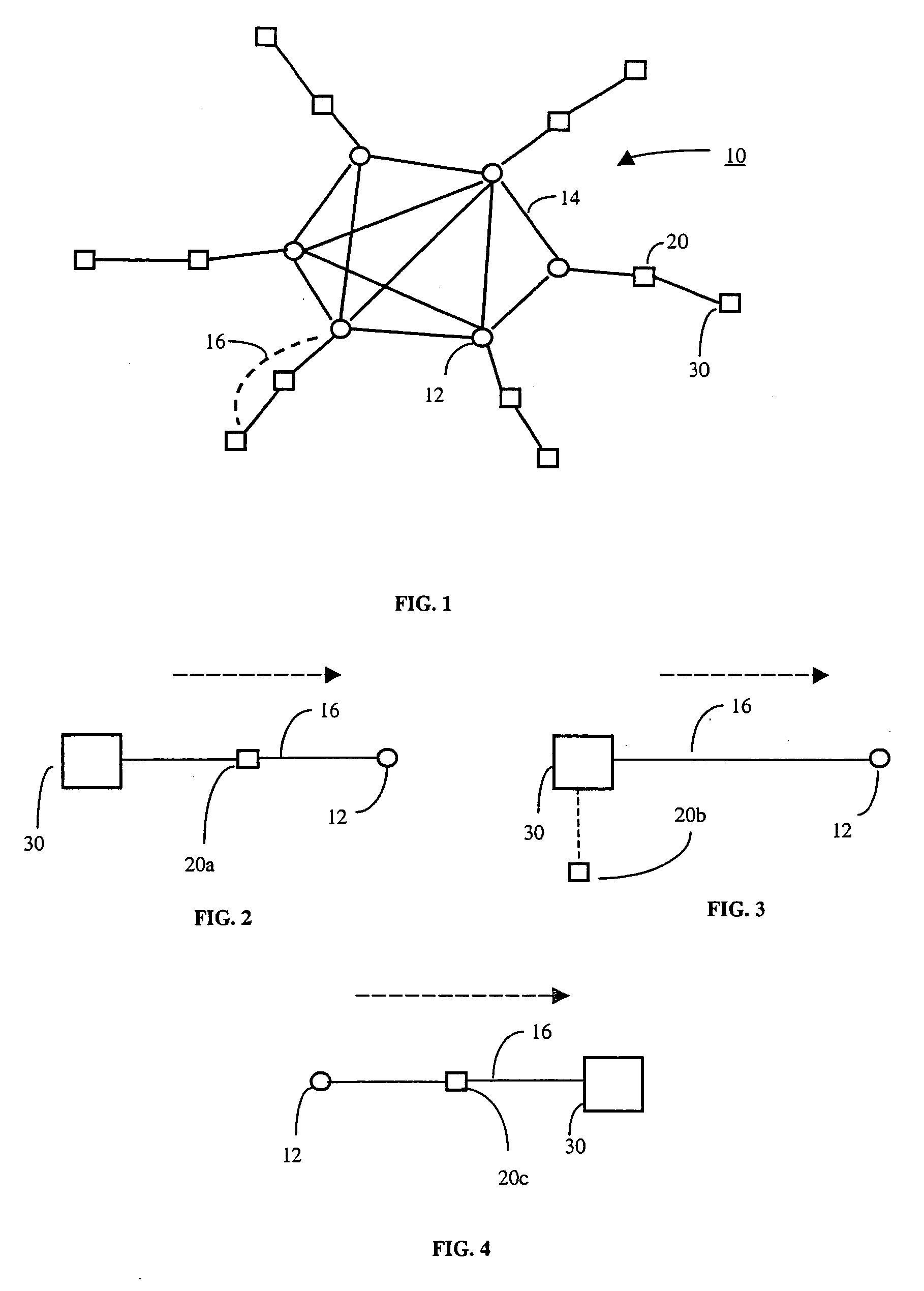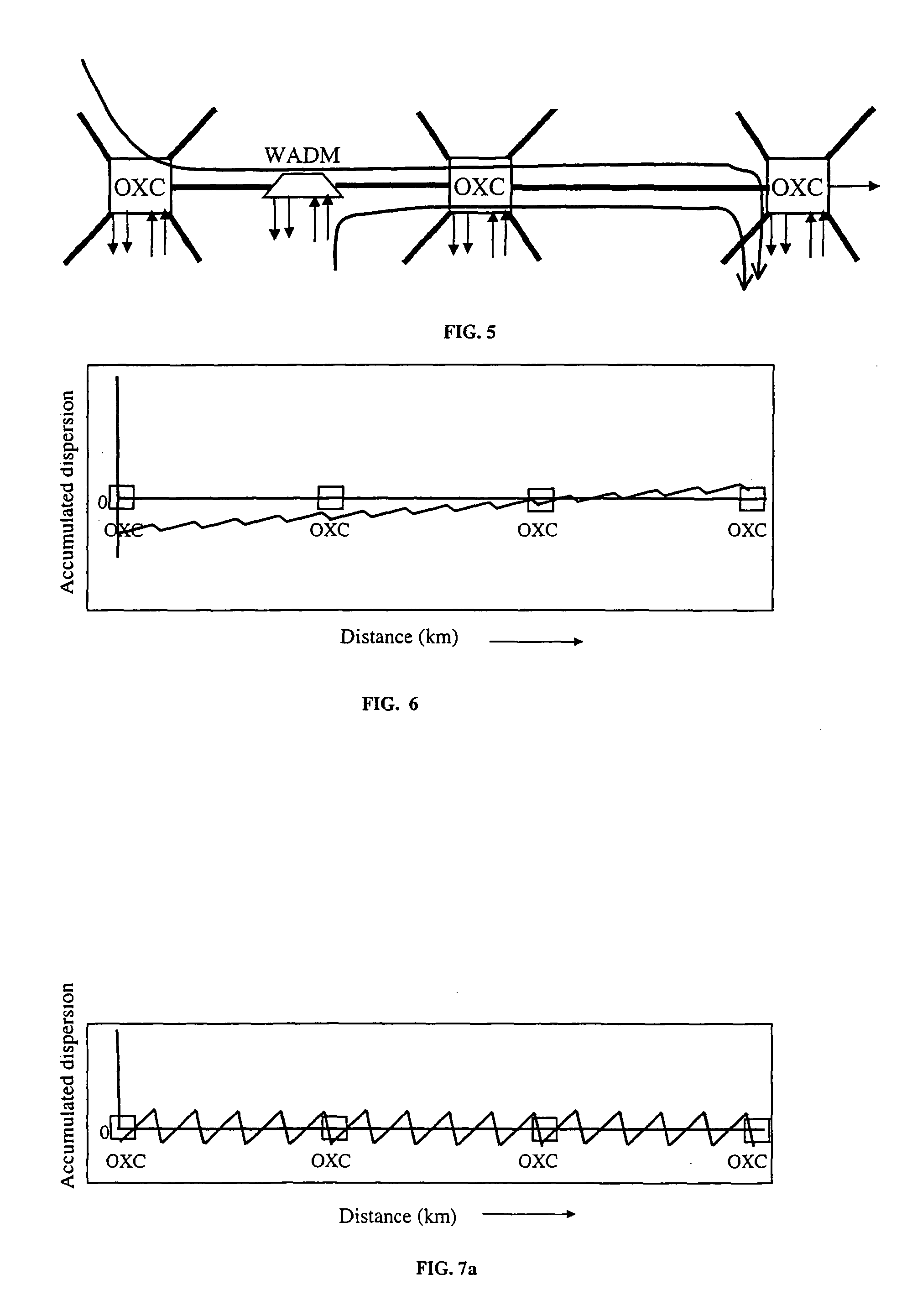Optical communication system and method
a communication system and optical technology, applied in the field of optical communication systems and methods, can solve the problems of requiring longer connection distances, affecting performance at shorter distances, and affecting the performance of optical elements,
- Summary
- Abstract
- Description
- Claims
- Application Information
AI Technical Summary
Problems solved by technology
Method used
Image
Examples
Embodiment Construction
[0102] In the experimental network setup schematically depicted in FIG. 14, eighty (80) channels were added at one node occupied by a broadcast-and-select optical add / drop multiplexer (B&S OADM). The 80 channels propagated over 1600 km of optical fiber (passing through 4 OADMs) and at the fifth OADM 50% of the signal traffic, i.e. an even number of channels, was dropped and 50% new traffic was added, whereafter the new set of 80 channels were circulated to the remaining spans.
[0103] The optical add / drop multiplexers (OADMs) or optical cross-connect nodes (OXCs) utilized in the setup were based on "broadcast-and-select" architecture (B&S), enabled by a wavelength-selective switch. The B&S OADM architecture is schematically illustrated in FIG. 15 for an OADM and in FIG. 16 for an OXC. The architecture comprises a 1.times.1 wavelength-selective switch or blocker, such as the DSE.TM. wavelength-selective switch from Corning Incorporated, Corning, N.Y., in combination with 1.times.2 powe...
PUM
 Login to View More
Login to View More Abstract
Description
Claims
Application Information
 Login to View More
Login to View More - R&D
- Intellectual Property
- Life Sciences
- Materials
- Tech Scout
- Unparalleled Data Quality
- Higher Quality Content
- 60% Fewer Hallucinations
Browse by: Latest US Patents, China's latest patents, Technical Efficacy Thesaurus, Application Domain, Technology Topic, Popular Technical Reports.
© 2025 PatSnap. All rights reserved.Legal|Privacy policy|Modern Slavery Act Transparency Statement|Sitemap|About US| Contact US: help@patsnap.com



